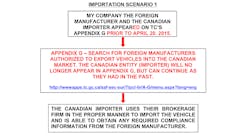The U.S. economy registered a surprising 3.9% GDP growth in Q2 after eking out just a 0.6% gain in Q1. Of course the extreme winter weather (for the second consecutive year) tanked Q1. I did not think there would be a strong snapback in Q2 based on the manufacturing data I analyzed. However, there was a significant snapback. Here are some reasons for it:
• Consumers delayed purchases. – Retail sales of products and services were impacted significantly by the harsh winter. People stayed hunkered down with their furnaces cranked for much of the first two months of the year. New England was literally buried with snow for much of the quarter. Consumers resumed consuming in Q2. They bought stuff they would have bought in Q1. They also went out and spent the money they accumulated in Q1 while cocooning. Consumer spending increased 3.1% in Q2.
• Manufacturing was impacted. There were some manufacturing disruptions, they just happened in other areas of the country this year versus last (the South and New England, instead of the Midwest). These companies played catch up in Q2. In addition, the bad weather caused orders to drop for other manufacturers, as demand waned in Q1. These producers revved up the factories in Q2 in response to stronger demand and to replace inventories (but maybe too many inventories).
• The Gas Price “Dividend” Finally Gets Spent. Economists have been baffled because significantly lower gas prices have not caused a jump in retail sales. Consumers waited to see if prices would remain low. They were not going to spend this extra money quickly when they thought that gas prices could spike right back up. Now people are more confident in spending this money and it helped boost the Q2 numbers. My Discretionary Spending Index has been strong since May. The Restaurant Performance Index has been very strong all year (although it did fall in August).
• The Employment Situation Continues To Improve. The economy continues to create jobs, of course, but not enough. The unemployment percentage is low, of course, but it can’t be trusted. Wages are growing, of course, too slowly, but it is a net positive. We have to assume there was a delay in hiring in Q1, so there was some pent-up labor demand filled in Q2.
Will This Economic Rally in Q2 Provide Momentum for the Rest of 2015?
To determine this, let’s review some of the forward-looking indicators:
• Economic Indexes. The ECRI (Economic Cycle Research Institute) Leading Growth Index has been sliding since June and went negative in August. The Conference Board Index of Leading Economic Indicators slowed to “0” in July and was only 0.1 in August. Not good.
• Manufacturing Data. Factory order data has been flat. New orders (ISM) were holding up until July and then weakened in August and September. Backlogs (ISM) of course have fallen as a result. The Philadelphia Fed Diffusion Index tanked big time in September. Thus the forecast is for slower manufacturing growth the rest of the year. Also, not good.
• Housing. Some mixed signals here. Builder confidence is still higher than it’s been in many years and very positive. However, recent building permit numbers have not been that impressive. Other housing statistics are better, but not consistent. The overall economy has experienced a “choppy” recovery. Why would we expect the housing recovery to be any better? So this is positive, but not very reliable.
• Confidence Indexes. Bloomberg’s Consumer Comfort Index is down slightly from earlier in the year, and the NFIB Small Business Optimism survey has been relatively flat at a moderate level for the past three months. Very neutral, if that is such a thing.
• Other Factors. The Chicago Fed National Activity Index is close to “0,” indicating current economic growth of around 2.3%. The price of commodities has dropped to alarming levels. So neutral, and negative.
• The Trucking Industry. FTR forecasts that freight growth will slow in Q4. This is not surprising based on the manufacturing data listed previously. The demand for new Class 8 trucks has weakened a bit recently, but remains healthy. The demand for trailers remains robust, but should follow the Class 8 market at some point soon. Good, but not great.
Conclusion
Based on the indicators, the economy did not receive any “slingshot” momentum from the big Q2 GDP. It appears the economy has reverted back to its slow growth mode. This is confirmed by some economists who say that the economy grew at a 2.2% annual rate in the first half of 2015.
The Wall Street Journal Survey of economists has Q3 at 2.0% and Q4 at 2.6%. Reportedly, inflated inventories will hinder Q3 some. So there was a snapback, but there is no snap forward. No extra positive momentum was generated by the strong performance of Q2. Just as we should not have been concerned with the low GDP in Q1, there is no reason to be joyous about Q2.
I now return you to your regularly scheduled economic programming. Nothing to see here.


